Holly Wong is an artist who lives and works in San Francisco, California. She creates installations, assemblages and works on paper, integrating non-traditional approaches with more traditional sewing and weaving techniques. Whilst her approach is non-conventional, it is, at the same time, deeply rooted in her history and culture, and that of the history of women.
She was educated at the San Francisco Art Institute where she graduated with a Master of Fine Arts with a concentration in New Genres. She has been awarded visual arts grants from the Integrity: Arts and Culture Association, Barbara Deming Memorial fund, the George Sugarman Foundation, the Puffin Foundation, and a Gerbode Foundation purchase award.
Holly has had over 50 group exhibitions and 10 solo exhibitions at venues such as the Berkeley Art Museum, the University of San Francisco and the Evanston Art Center in Illinois. She is a member of SFWA Gallery in San Francisco, and A.I.R. Gallery in Brooklyn, New York.
In this interview, you will learn about Holly’s development from young and uncertain artist to bold and daring professional. She describes her process of emancipation – how being true to her nature and fearlessly following her own instincts allowed her most integrous artwork to truly emerge.
Holly tells how painting and sewing obsessively can take her to a beautiful mental space – can she take you there too?
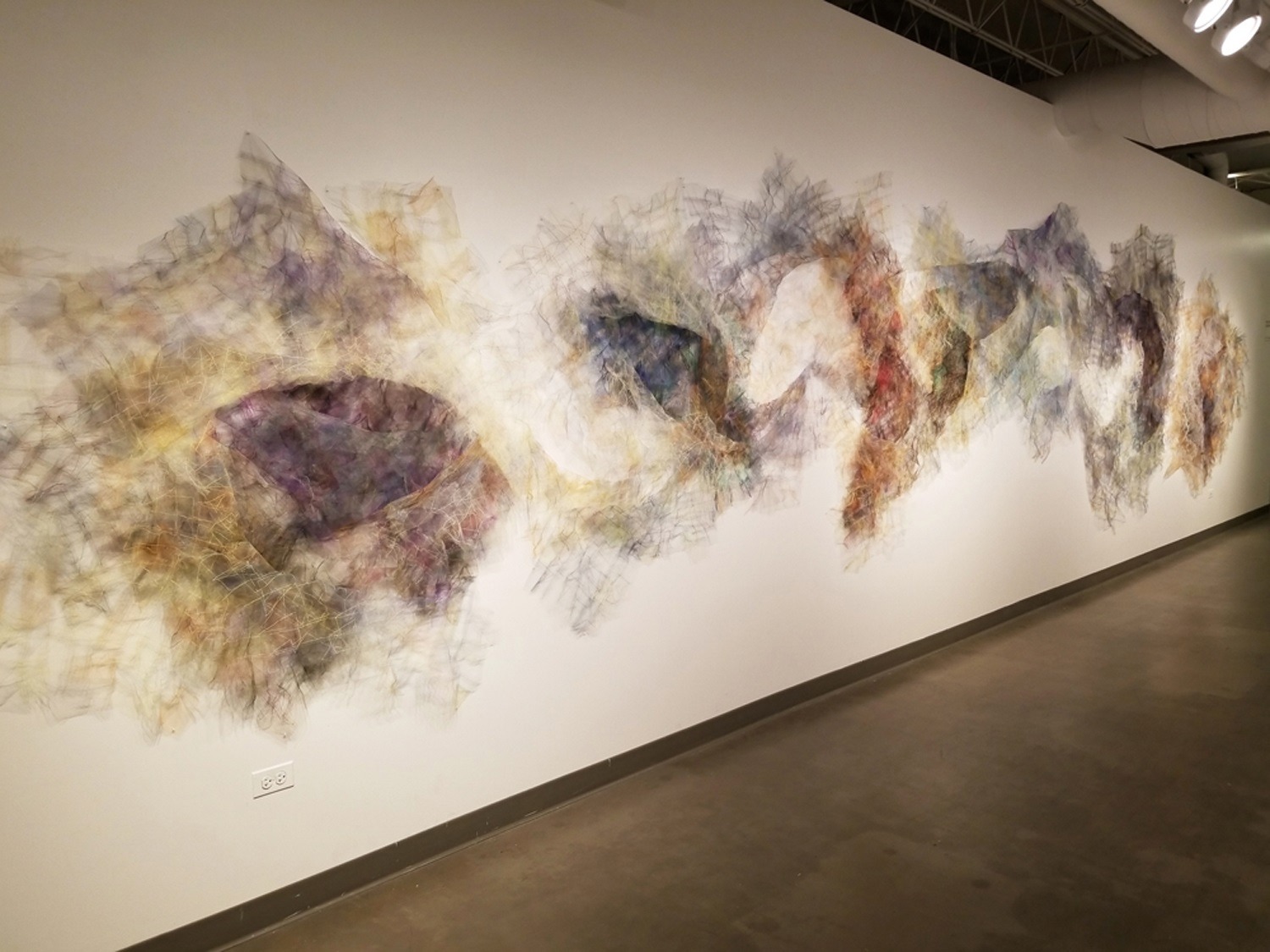
Transformative painting
TextileArtist: What initially attracted you to textiles as a medium? How was your imagination captured?
Holly Wong: I was initially attracted to textiles because my mother was an amazing seamstress; her grandfather was a German tailor and her mother was a meticulous dressmaker.
Growing up, I loved the beautiful fabric that my mom would lay out on the kitchen counter after dinner had been finished. She rarely purchased patterns; she could just look at something and know how to prepare her own measurements and styling.
Then in high school, a schoolmate’s mother was a master quilt maker who operated a store that sold fabric and gave classes. I would marvel endlessly at the myriad shades of quilt “quarters” and the historical block patterns and all that they signified about women’s lives in a beautiful and abstract language.
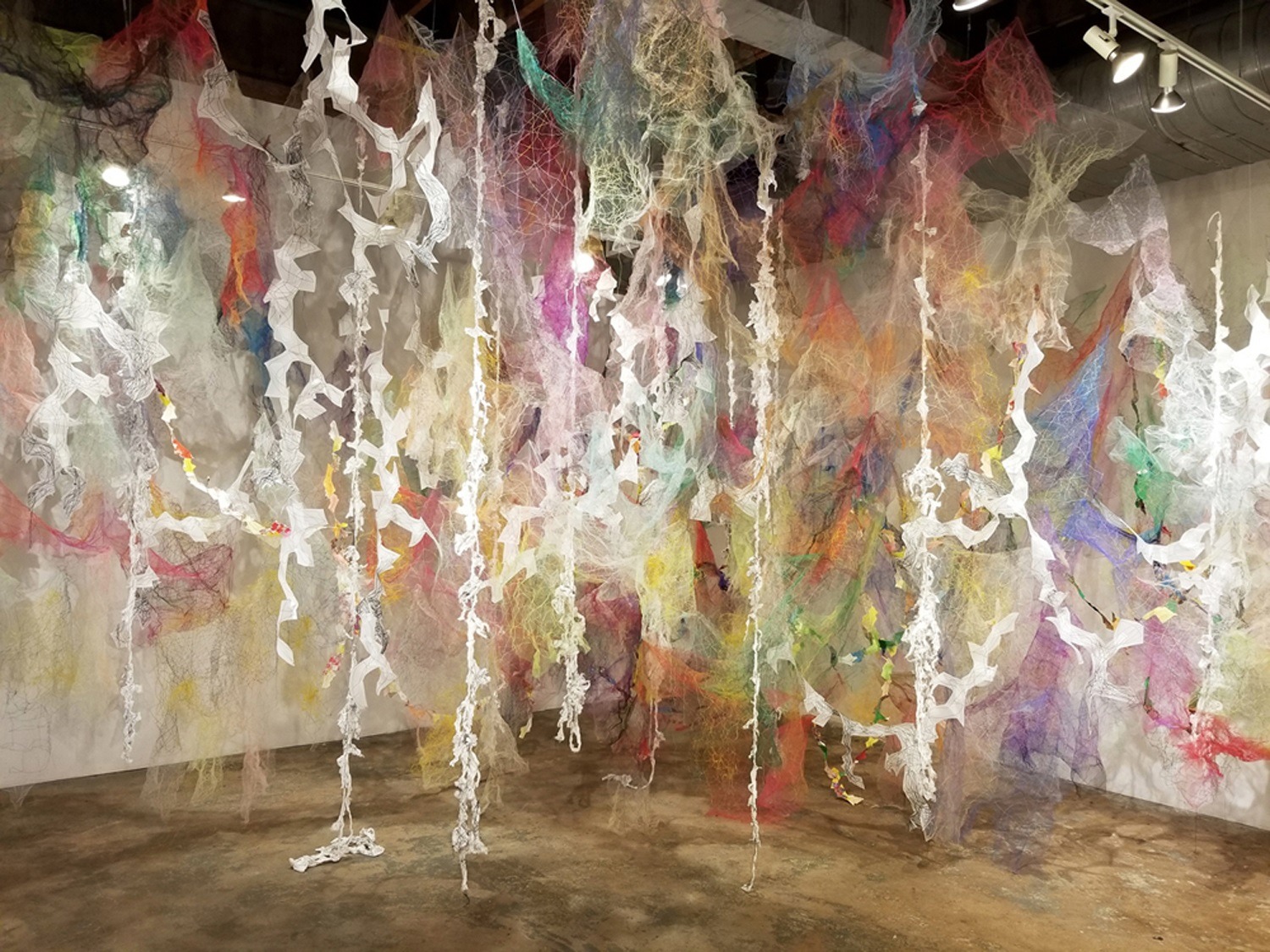
What or who were your early influences and how has your life/upbringing influenced your work?
Certainly, my mother was a huge influence, as was the beautiful history of early American quilting and embroidering. Alongside all of this, I was also attending an arts high school and becoming a painter, so I was looking at art in the broader realm as well.
Artists such as Remedios Varo and Frida Kahlo, as well as Miriam Schapiro and Joyce Kozloff, were important early influences. I found that looking at the work of women helped me understand that my gender could be powerful, assertive and expressive and that I could join that transformation of our culture.
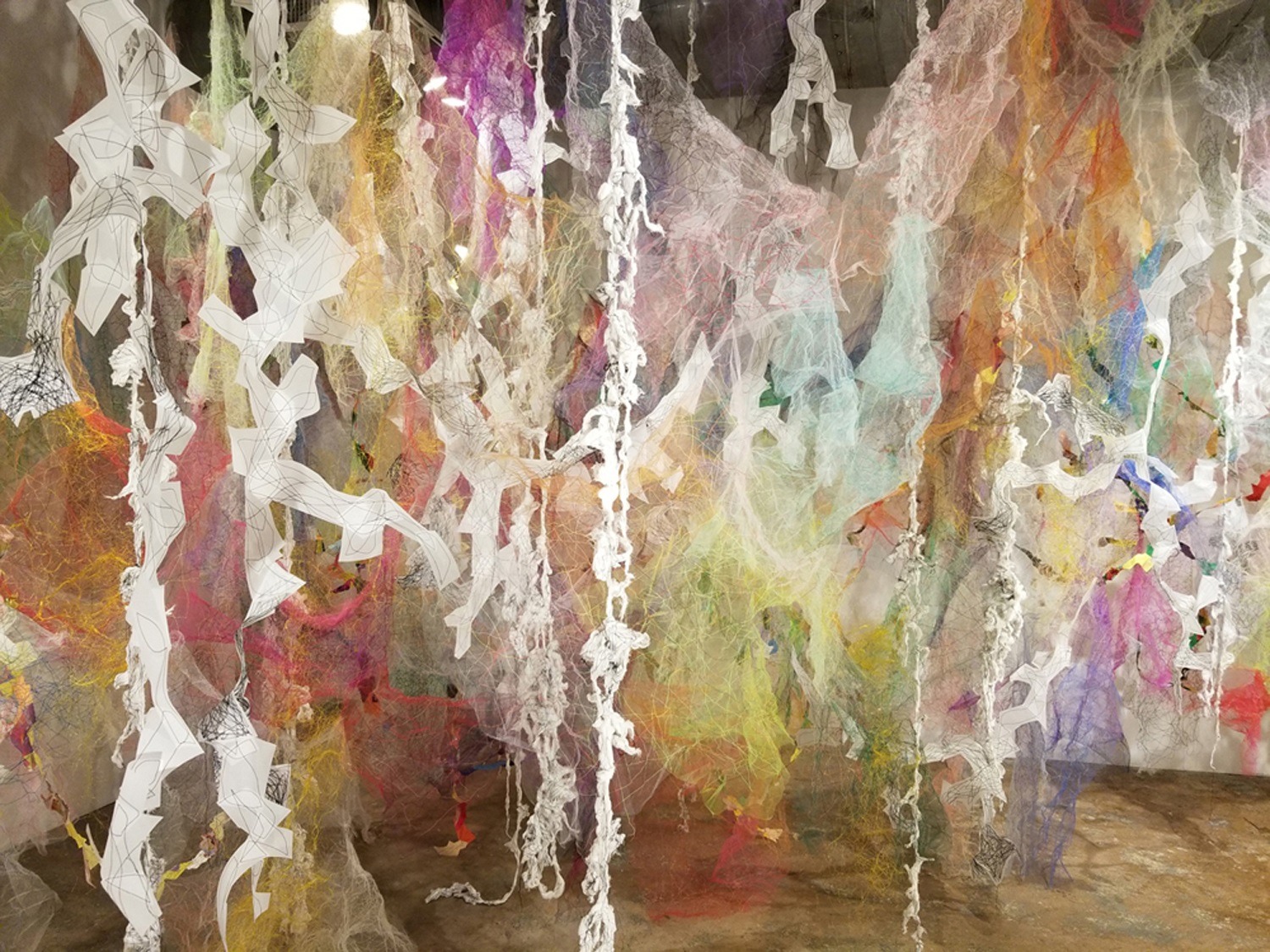
What was your route to becoming an artist?
Like many people, I started my artistic path by drawing a lot while in elementary school – and then realized that it felt deeply meaningful to me. It was a very personal and authentic way to tell the story of my life and to try to figure out who I was.
I pursued a wide variety of materials and approaches in my BFA and MFA programs, including painting, sculpture, installation, and performance, as well as time-based media, and had to come to a place of clarifying what most resonated for me as I matured as an artist. I ultimately developed a studio practice that integrated painting and textile work in the context of installations as well as works on paper.
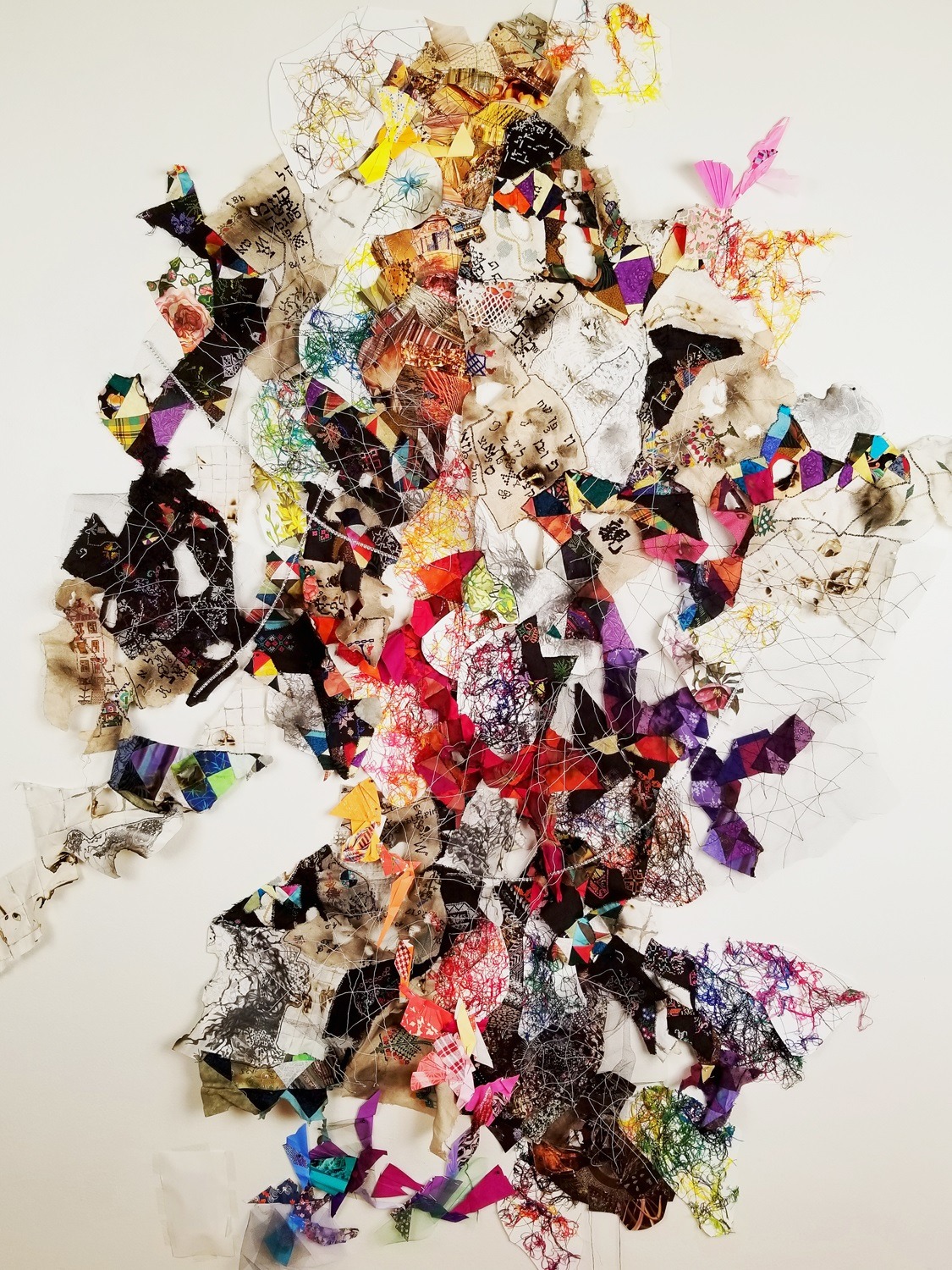
Ephemeral materials
Tell us about your process from conception to creation
I would say that I start with a very broad feeling or impression. I wouldn’t exactly call it an “idea”, but I do see things visually as impressions, and find in the materials around me an external expression of that.
I often run my hands over the material and gently observe them whether it is fabric, cellophane, thread, paper or otherwise. I am asking it to teach me and I promise to follow it. I am open-ended and I just start. Then I respond back to what is in front of me and in many ways, the work just makes itself and I am there to serve that process.
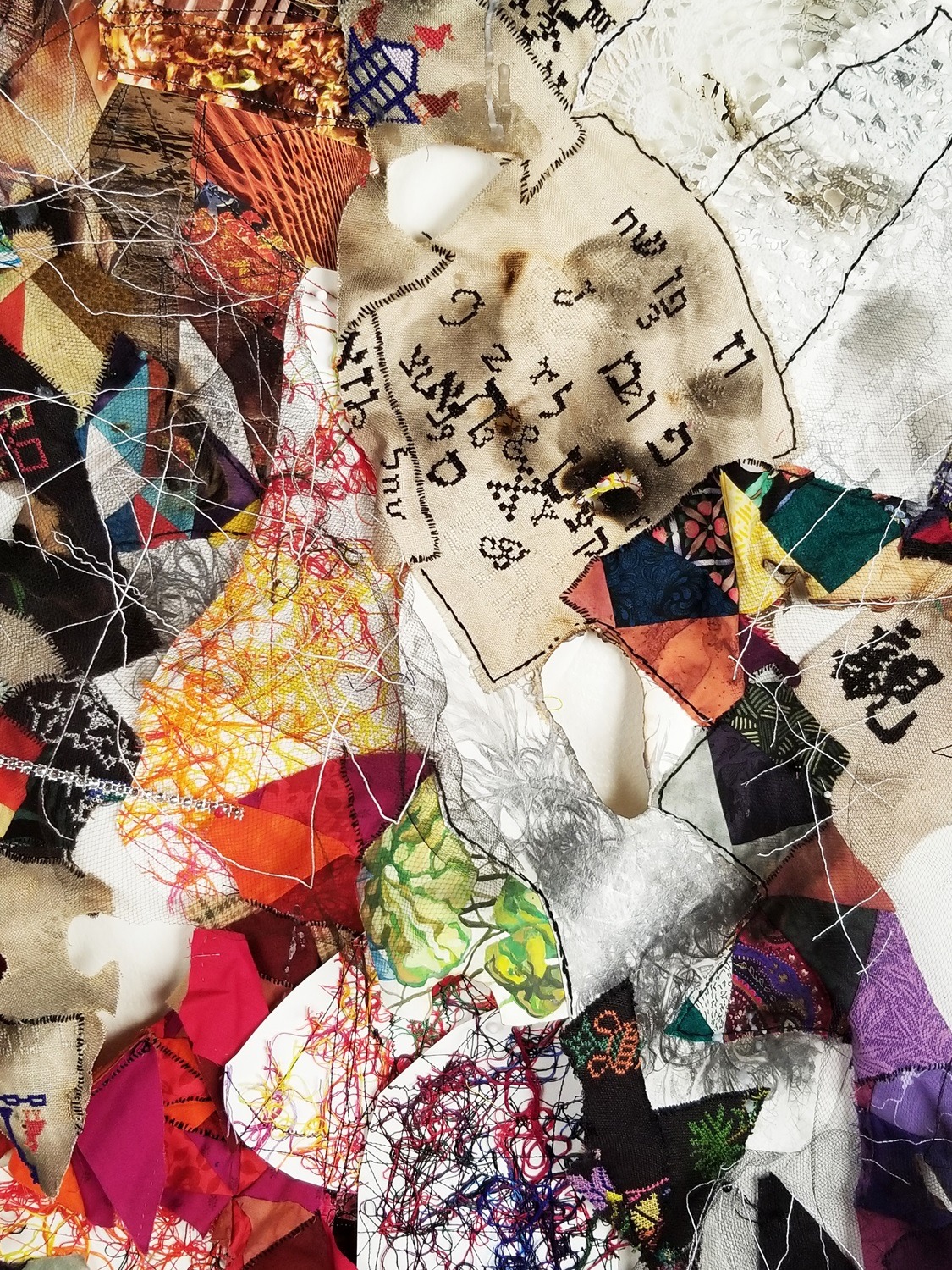
Tell us a bit about your chosen techniques and how you use them
There are two primary approaches that I take. I have the more textile/fiber component of my work which translates into large scale installations. This involves using my sewing machine as a drawing tool as I sew linear networks and webs across hundreds of yards of materials. The sewing line connects everything for me, both visually and spiritually.
I generally use ephemeral materials like polyester tulle, cellophane, dichroic film, and thread, because it relates deeply to my philosophical sense that all things are impermanent and elusive. Art for me captures that moment when we have enough space and silence to experience that.
The second approach is my works on paper which generally involves painting highly ornate patterns with gouache on paper. I do this, most likely because of my love of biomorphic shapes in nature, but also my ongoing obsession with fabric.
Once I have finished painting the patterns, I burn the surface of the paper with candle smoke so that it obscures the image, and then I paint back into it to “pull” it out. I also xerox origami patterns onto transparent film, sew them into shapes and then layer on to the painting, in addition to adding layers of netting that have been sewn with webs of iridescent thread.
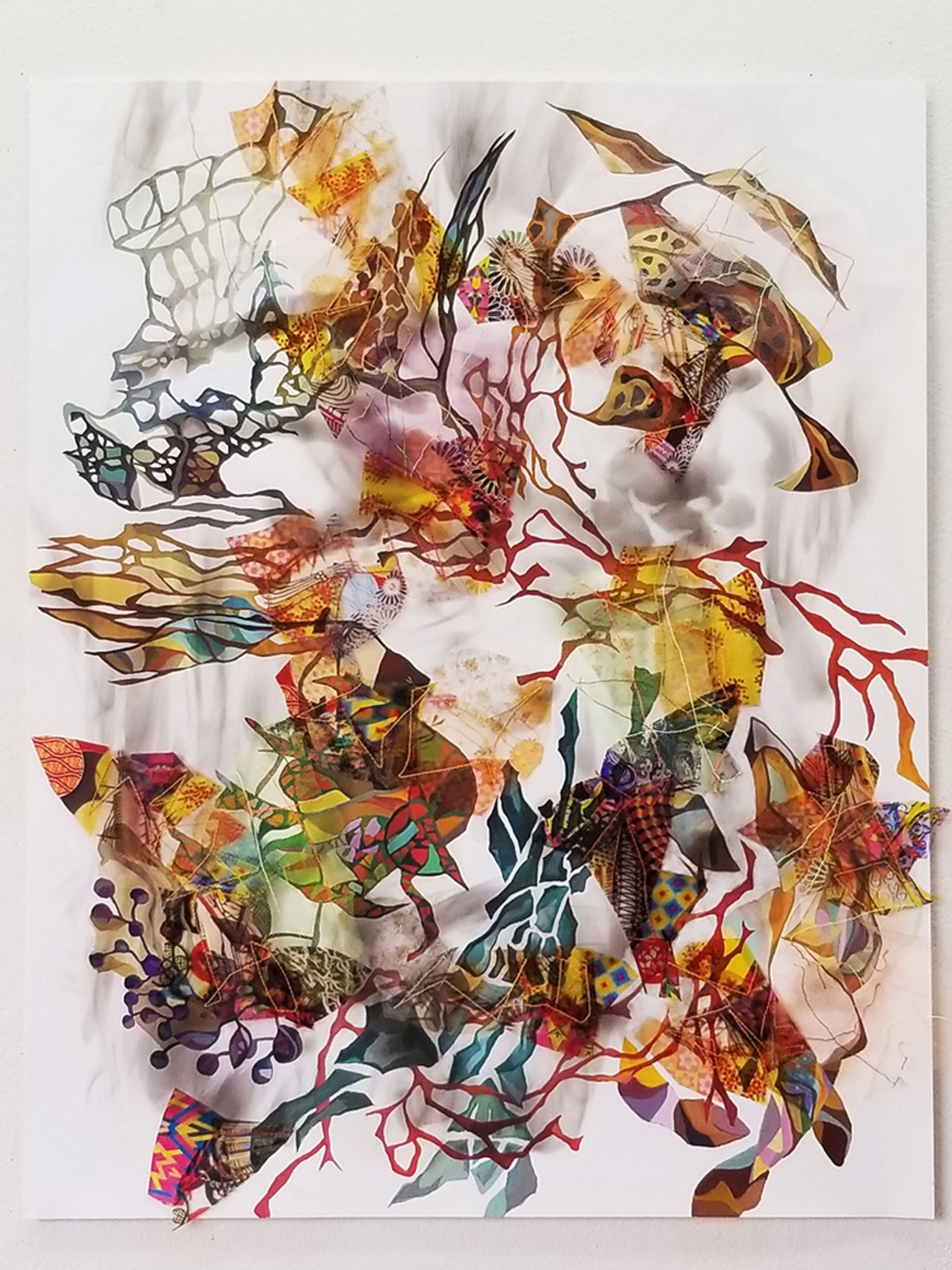
What currently inspires you?
I collect clippings, mostly from fashion magazines and the New York Times, that demonstrate a myriad of shapes, colors, and textures. Aquatic elements, plant life, and trees are particularly inspiring.
I had an exhibition at Evanston Art Center in Illinois this past July and was particularly enthralled with the incredible beauty of the trees there. They arch majestically and have a beautiful canopy of delicate and silvery leaves. Because the light was strong and bright in July, the trees literally sparkled at dusk. The shadows of the leaves on the sidewalk influenced a whole series of work because of the beautiful and magical light play that I saw as I walked back and forth every day.
Nature, above all else, inspires me and then, of course, the love of patterns of all kinds. I literally can’t help myself and sew and paint obsessively because I love the beautiful mental space I travel to when I am there.
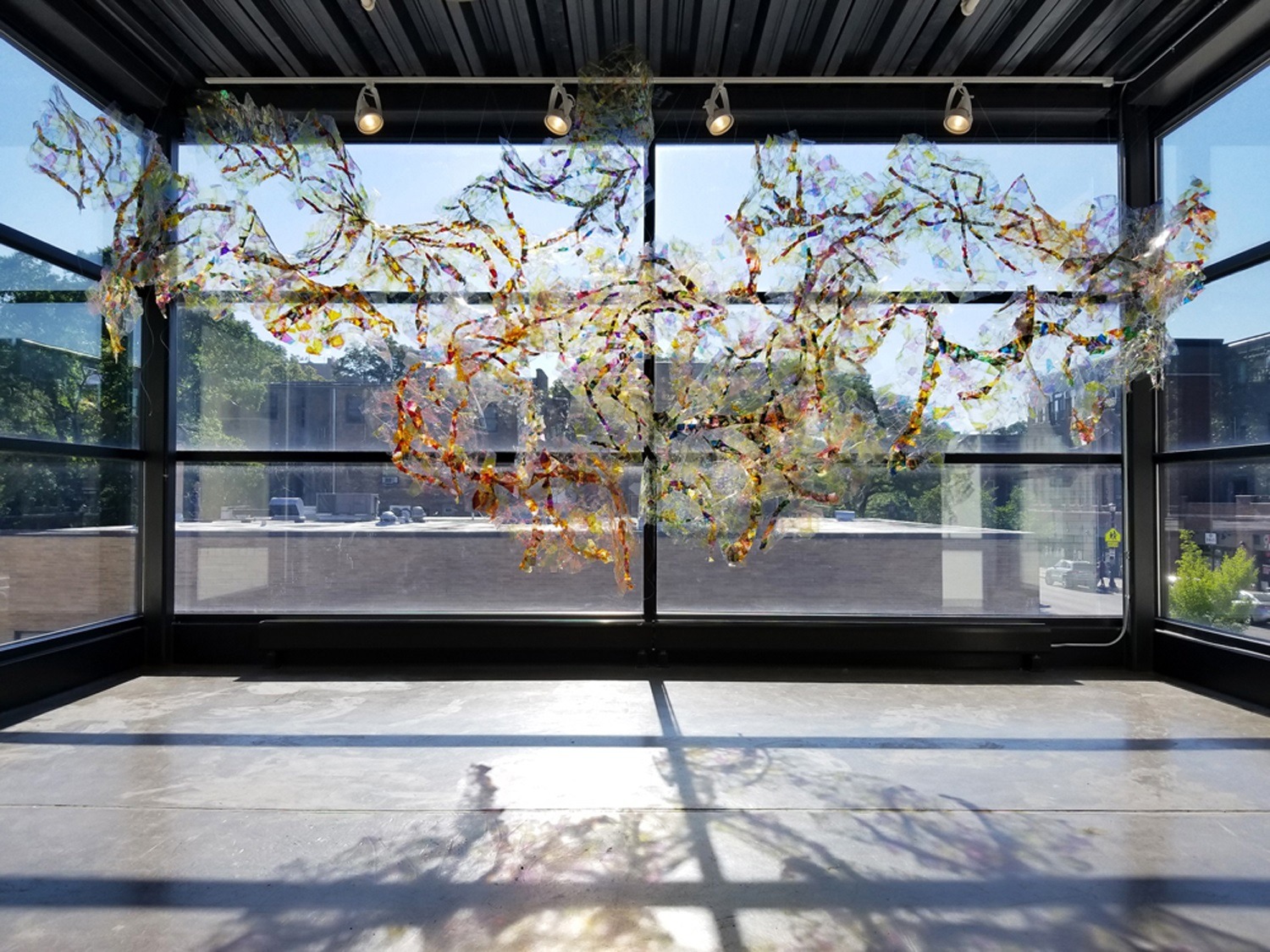
Light and smoke
Tell us about a piece of your work that holds particularly fond memories and why?
“Silent Music” was designed for the Atrium Gallery at Evanston Art Center this past July. It is something I consider a site-specific work because I chose the materials and the placement based on the time of year and the direction the window was facing.
It is the first work where I really integrated the use of patterns by xeroxing them on transparent film and then sewing them into biomorphic linear shapes that are placed on panels of light reflective dichroic film.
When I would arrive at the Gallery each morning at 8:30am, the light coming through the window would illuminate the dichroic film and cellophane and it would glow. I did not realize that it would do this and it was a wonderful surprise. I used black thread as well as a variety of iridescent threads to sew the shapes together, and the backlighting from the window really emphasized the intricate networks of threads or bloodlines.
“Silent Music” was inspired initially by the Bill Evans composition “Waltz for Debby.” The lyric “She dances to silent music” particularly resonated with me because I feel completely alive in my work and it is like I am working to some kind of silent music in my head.
As the work progressed over a four-month period, I became aware of the pioneer environmentalist Rachel Carson and her 1962 landmark book Silent Spring (Penguin Modern Classics) and ultimately decided that the work was a homage to her. She was an early voice in the wilderness about the dangers of environmental toxins and my work, being fundamentally about nature and the reconnection of the body, is my honoring of her legacy.
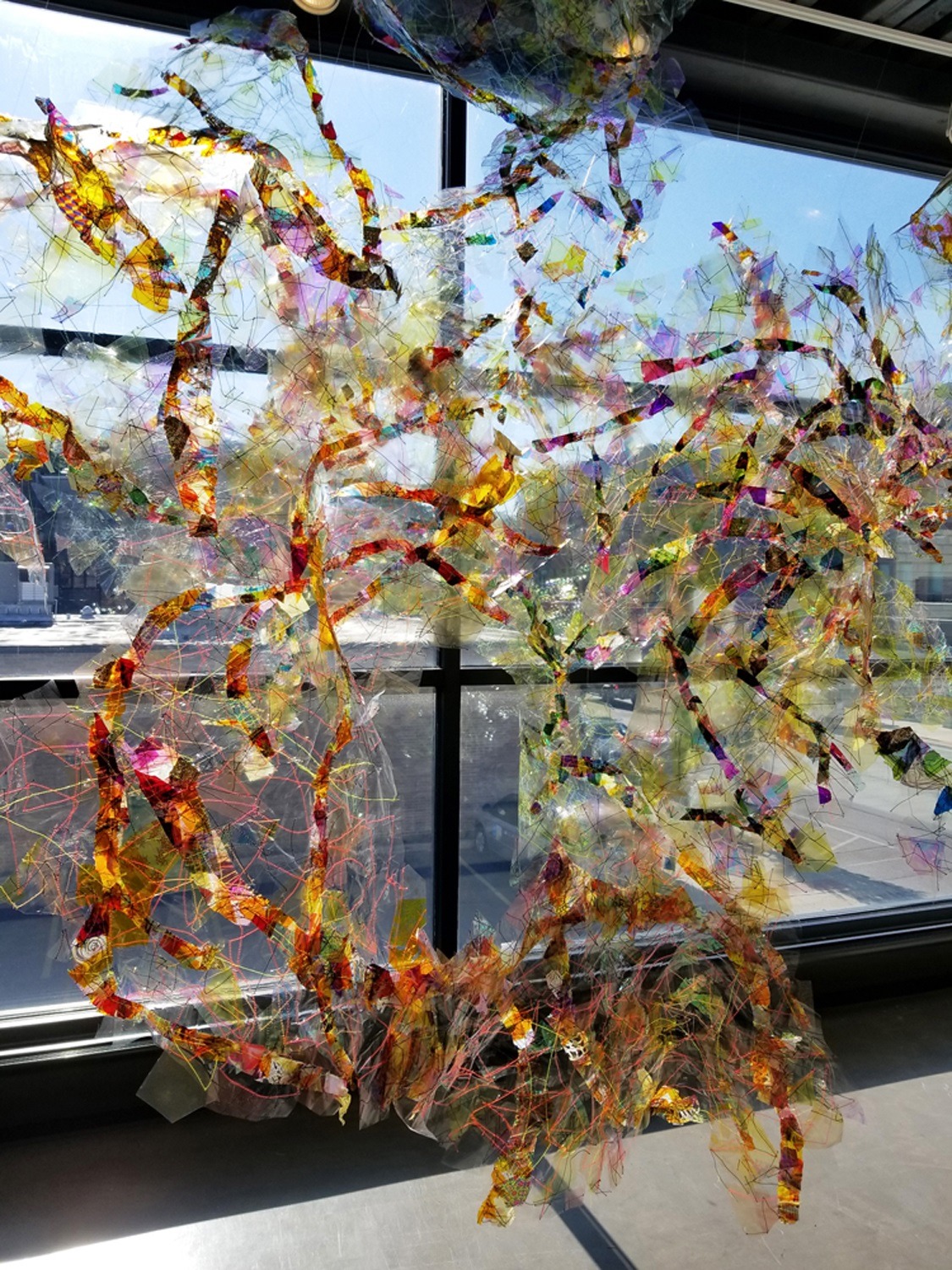
How has your work developed since you began and how do you see it evolving in the future?
As a young woman, I was very unsure of myself as an artist and as a person in general. I did not see my value or have faith in my process, so I was more careful and mindful of preserving the boundaries between one media or the other. I was never formally trained as a textile artist but it constantly cropped up in my work throughout my 20’s and 30’s, though I did not have the confidence yet to really run with it.
In my early 40’s, I reached a turning point where I decided that I was going to make artwork exactly in the way I was inspired to make the work. If it meant sewing vegetable netting, plastic bags, and paper doilies or painting things and then burning them, I told myself I would follow it wherever it was going to go. I would give in to every instinct and listen without fear. I would dare to follow my true nature and let it teach me. At that point, I think my mature voice in my work emerged because as a person, I was no longer afraid and no longer willing to play at being small or less than.
Once I embraced my own emancipation, the artwork that really belonged to me emerged.
In terms of the future, I see my work getting bolder, brighter, larger and more ambitious. I will embrace everything that I love, everything that is fabulous and I will crowd out all negativity in my life with my artwork.
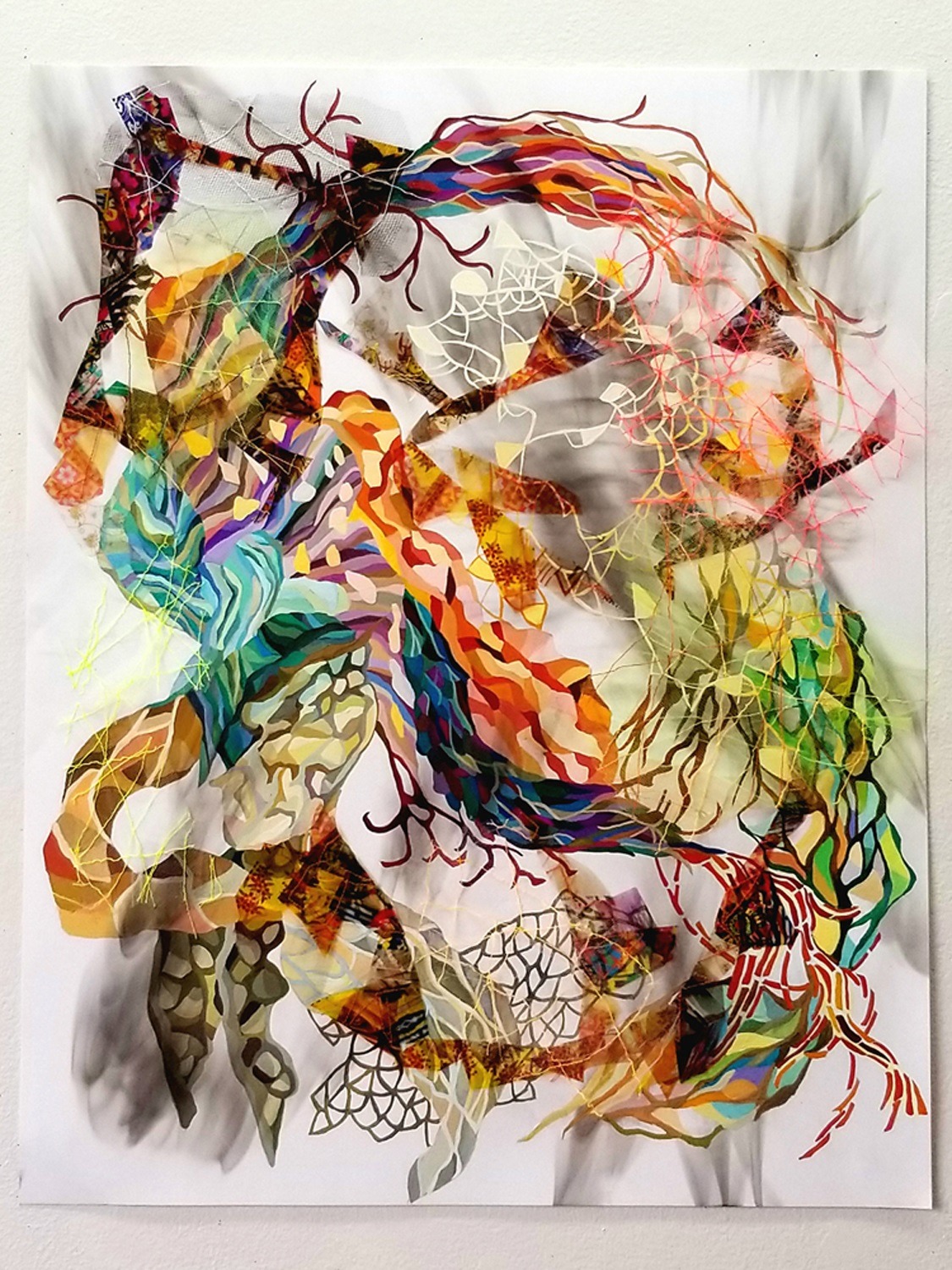
What advice would you give to an aspiring textile artist?
I would say that it is helpful to learn about a variety of techniques that speak to you and draw your interest. I love machine sewing because it reminds me of drawing, it’s fast and immediate. That said, I am not a slave to the “perfectness” of it. I always ask myself first in the work “where am I trying to go?” I then pick the material from there. Sometimes it does mean I use my sewing machine. Other times I paint. Other times, I knot or shred things.
Most importantly, have a consistent studio practice and protect that time for your development. It cannot be overemphasized that putting time in the work is the most profound learning.
Understand the history of textile art, not only from your own culture but from other beautiful cultures outside your own.
Understand the variety of ways in which people use textiles, from more historic craft approaches to contemporary uses of textiles. It is all valid and all have a place in your toolbox.
Above all else, believe in yourself, trust your process, accept feedback, but always go back to your “True North.” Your personal voice in your work is what makes it special to the world.
For more information visit hollywongart.com and Instagram
Let your friends know about this artist’s work by sharing the article on social media. It’s easy – click on the buttons below!
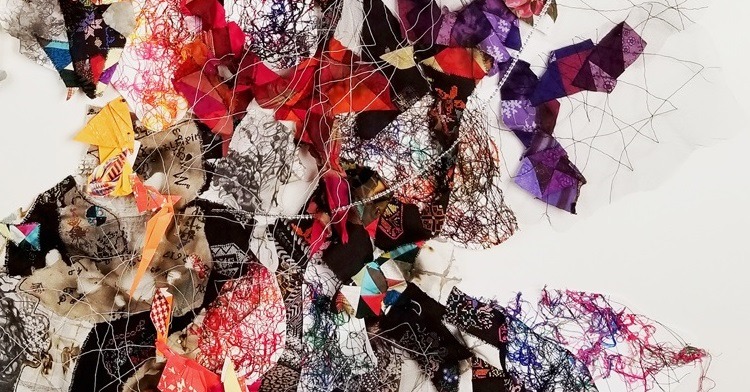

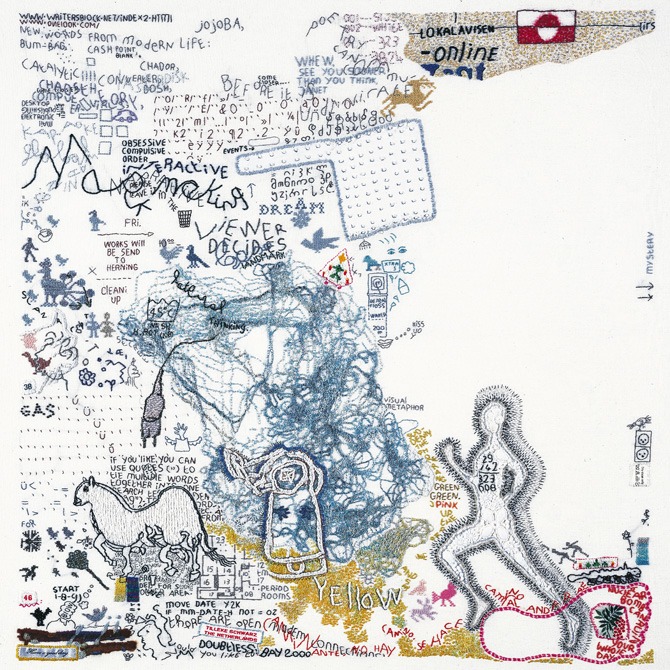
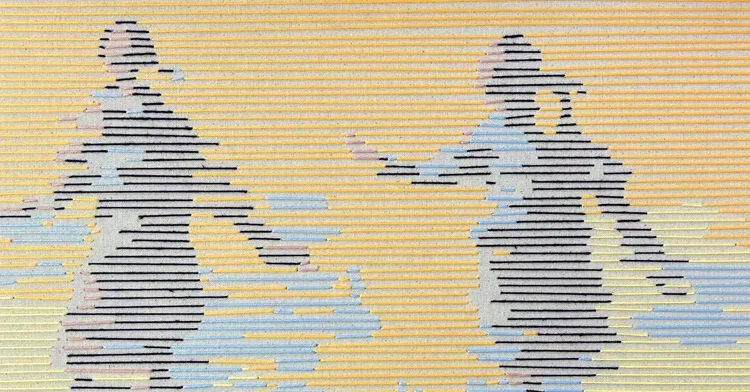
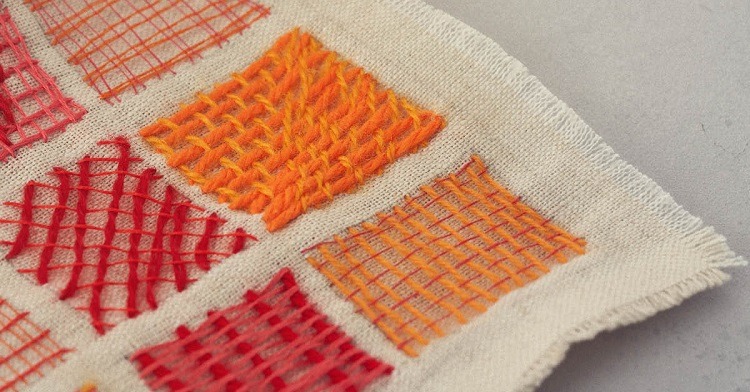
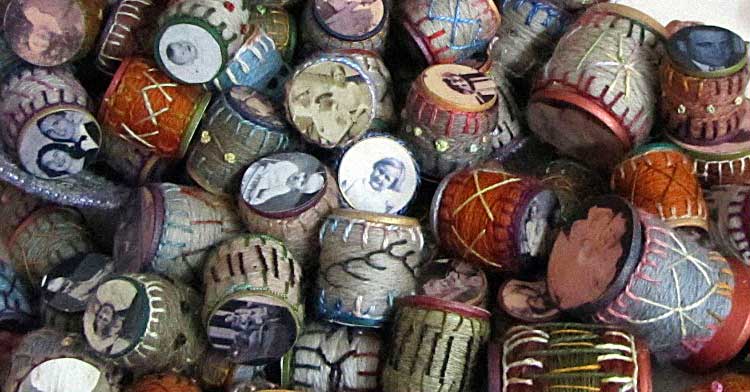
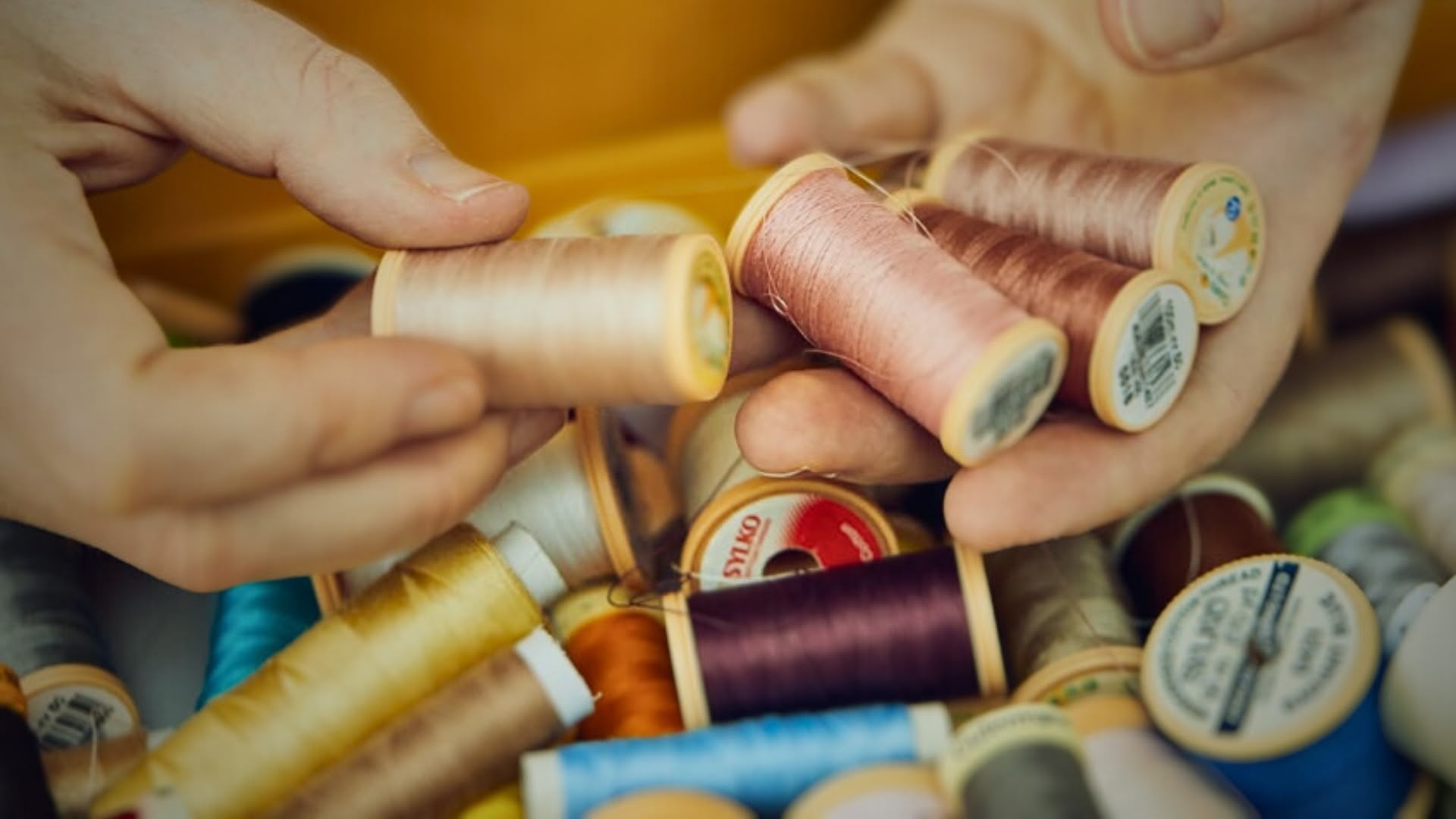
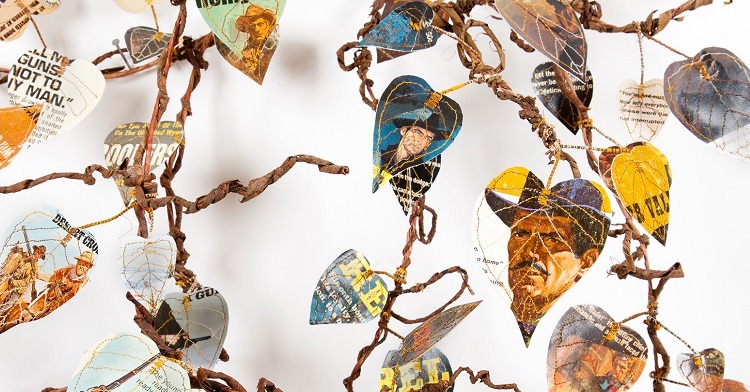
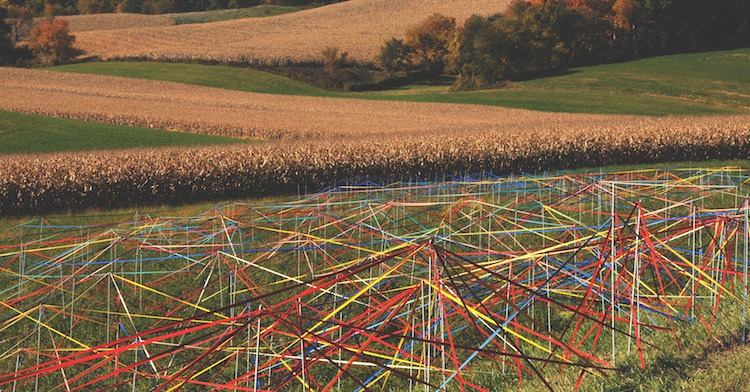
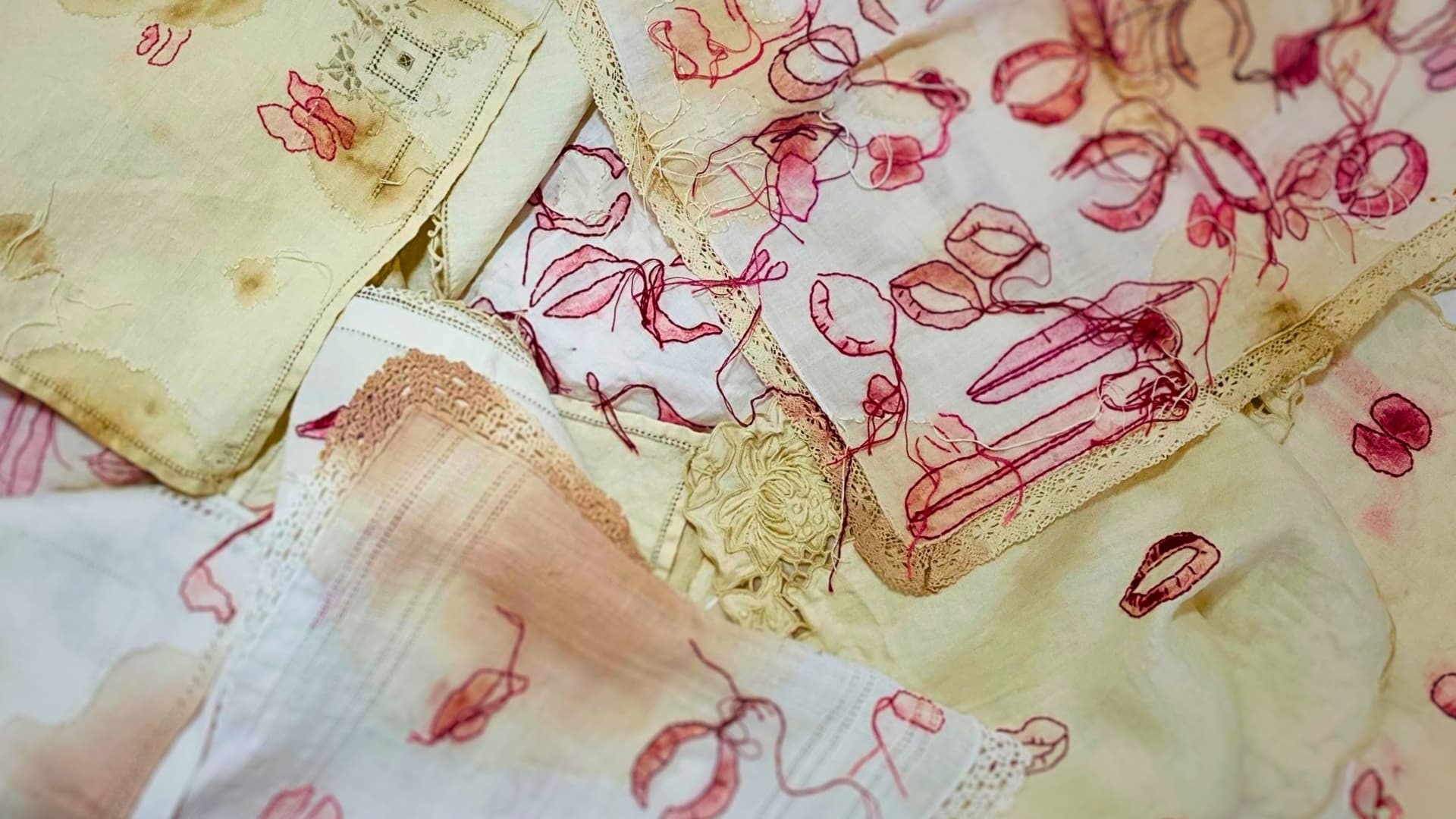
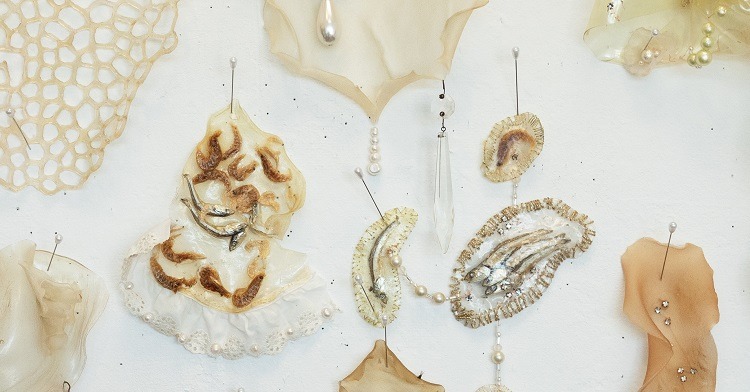
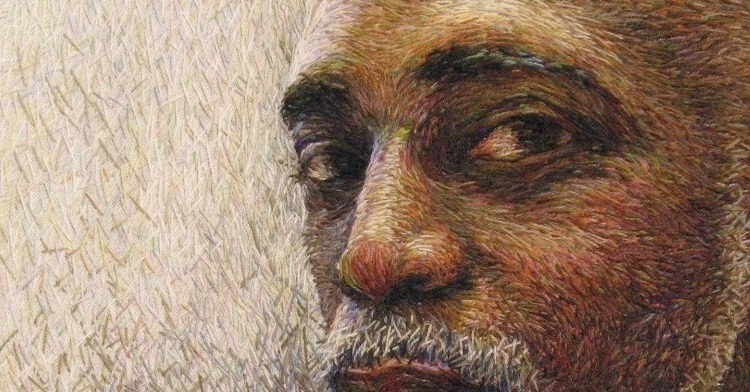
1 comment
Patricia Brown
What an inspiring article. I appreciate the honesty and integrity of this work. I love the idea of listening to instinct without fear – a courageous philosophy. What original work comes from this. I hope one day to see this work in person.